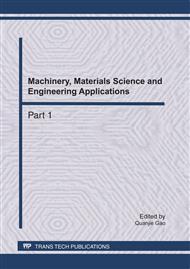p.1
p.5
p.10
p.17
p.23
p.29
p.34
p.38
A Decision Making Methodology to Divide Virtualized Resources Morphologies
Abstract:
The resources are divided into curable and non-curable morphologies to improve the efficiency of virtual computing systems, and we determine the quantities of such two morphologies based on resources required and resources that system owes. In the environment of tasks presenting random distribution, we describe the trend of resources required and compute the range interval of curable morphology by theoretical analysis. It is concluded that the amounts of tasks have great effect on resources required and the experiments show that the trend of decision variables in our numerical example is consistent with the theory discussed. The decision making methodology presented in this paper has some significance to the management of resources in virtual computing systems.
Info:
Periodical:
Pages:
10-16
Citation:
Online since:
April 2011
Authors:
Price:
Сopyright:
© 2011 Trans Tech Publications Ltd. All Rights Reserved
Share:
Citation:


